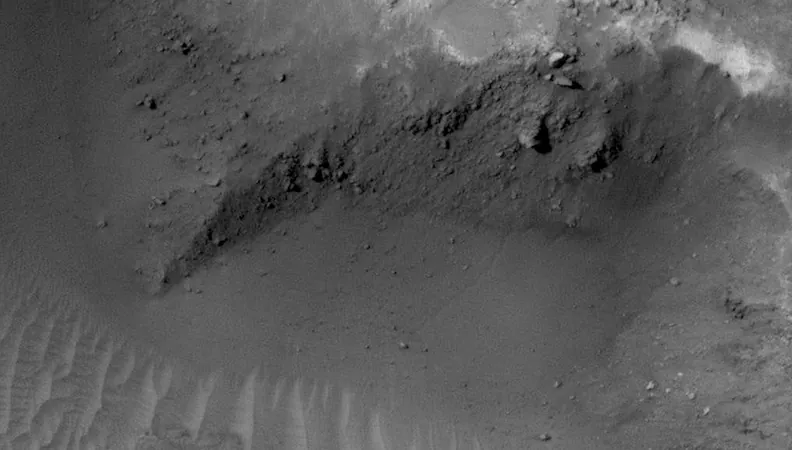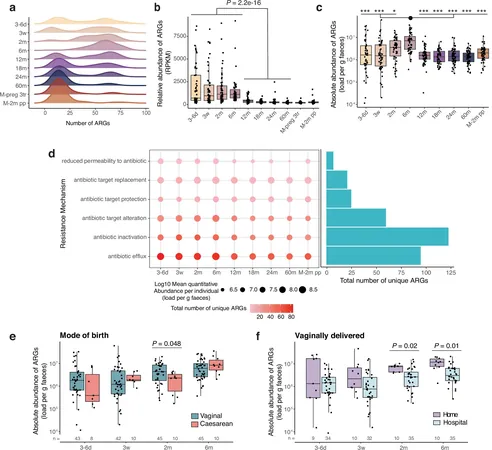
Exciting New Evidence for Life on Mars: Rosalind Franklin Rover Set to Explore Ancient Floods and Rockfalls
2025-09-11
Author: Li
Can the Rosalind Franklin Rover Uncover Martian Life?
Exciting news is emerging from the Rosalind Franklin mission, which might be poised to discover evidence of past life on Mars sooner than anticipated! Two recent studies reveal that this rover, set to launch in 2028, could stumble upon organic materials without needing to venture far from its landing zone.
A Strategic Landing Site
The European Space Agency's Rosalind Franklin will touch down in Oxia Planum, an area rich in ancient clay minerals that formed in water billions of years ago. These clays are crucial for preserving organic molecules, which are potential building blocks for life.
Rockfalls: A Hidden Treasure Trove
At the EPSC–DPS2025 Joint Meeting in Helsinki, Dr. Aleksandra Sokołowska presented groundbreaking findings that show 258 rockfalls surrounding the rover's landing site. These rockfalls, primarily located on steep slopes, could give Rosalind Franklin access to materials that have remained untouched and shielded from radiation.
Using NASA’s HiRISE camera, the team identified rockfalls using deep-learning algorithms, revealing their tracks—deep grooves running up to 500 meters. With these discoveries, the rover may encounter fresh samples that were previously inaccessible.
The Benefits of Rockfalls
"This opens up exciting possibilities!" Sokołowska explained. "The rover can harness these rockfalls to diversify its sample collection." A significant benefit of these materials is that they may contain organic molecules preserved from the harsh Martian environment.
A Closer Look at Martian Clays
In another intriguing presentation, researcher Ananya Srivastava highlighted how the clay-rich areas of Oxia Planum likely emerged from massive floods over 3.5 billion years ago. By examining layers of clay unique to this Martian region, the team discovered evidence suggesting that clay deposits may have come from elsewhere, transported by ancient rivers.
These alternating layers of clay indicate a complex history of water flow and climatic changes on Mars, revealing even more about the planet’s potentially habitable past.
Unraveling Mars’ Ancient Climate
The findings point to a Mars that experienced varying climatic conditions, trapping organic materials in its geological layers. This discovery raises tantalizing prospects for future missions—could Rosalind Franklin uncover the ultimate prize: evidence of life beyond Earth?
The Thrill of Discovery Awaits!
As the 2028 launch date inches closer, scientists are optimistic. With natural processes at work potentially bringing ancient materials directly to the rover, the chances of making groundbreaking discoveries only increase. The Rosalind Franklin mission could very well change our understanding of life on Mars forever.

 Brasil (PT)
Brasil (PT)
 Canada (EN)
Canada (EN)
 Chile (ES)
Chile (ES)
 Česko (CS)
Česko (CS)
 대한민국 (KO)
대한민국 (KO)
 España (ES)
España (ES)
 France (FR)
France (FR)
 Hong Kong (EN)
Hong Kong (EN)
 Italia (IT)
Italia (IT)
 日本 (JA)
日本 (JA)
 Magyarország (HU)
Magyarország (HU)
 Norge (NO)
Norge (NO)
 Polska (PL)
Polska (PL)
 Schweiz (DE)
Schweiz (DE)
 Singapore (EN)
Singapore (EN)
 Sverige (SV)
Sverige (SV)
 Suomi (FI)
Suomi (FI)
 Türkiye (TR)
Türkiye (TR)
 الإمارات العربية المتحدة (AR)
الإمارات العربية المتحدة (AR)